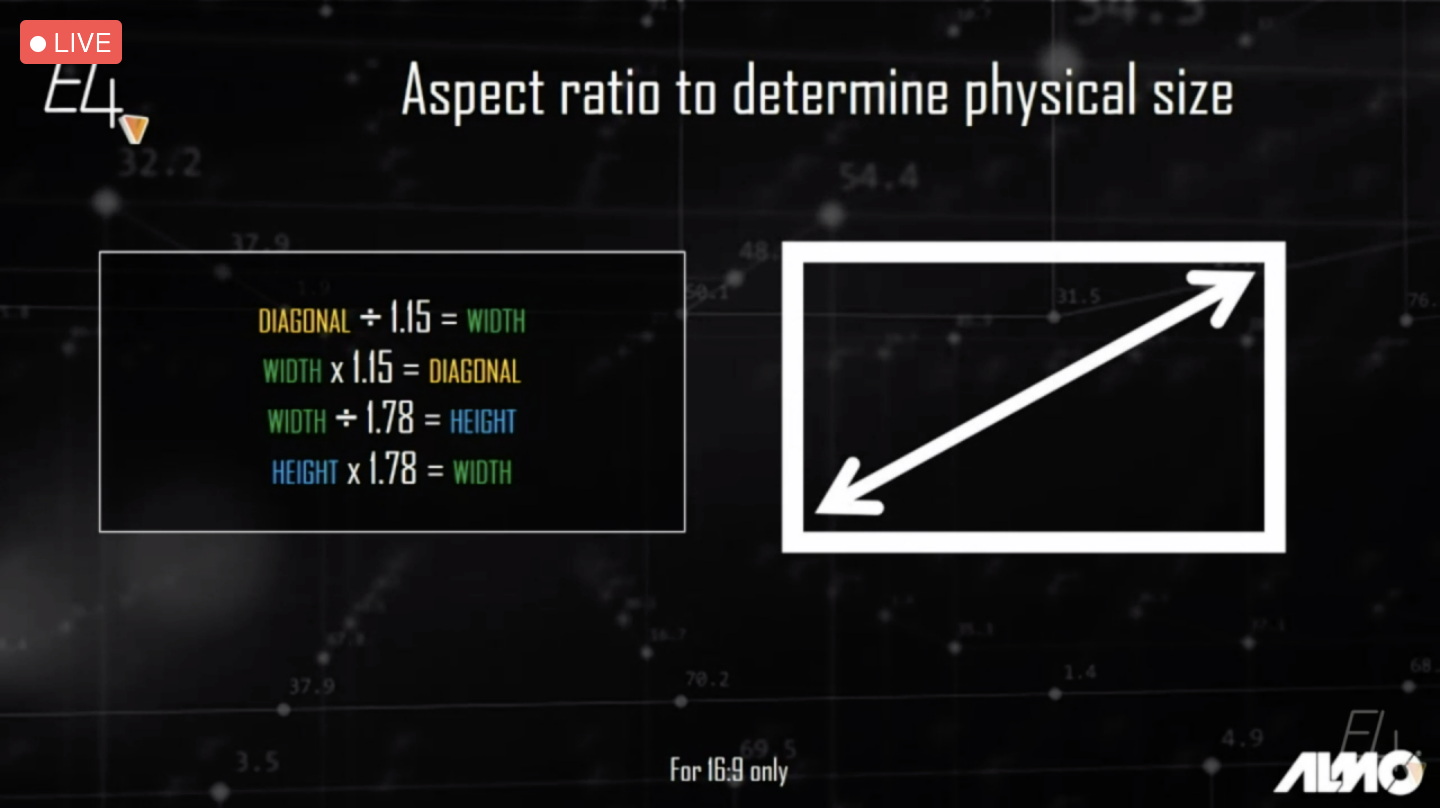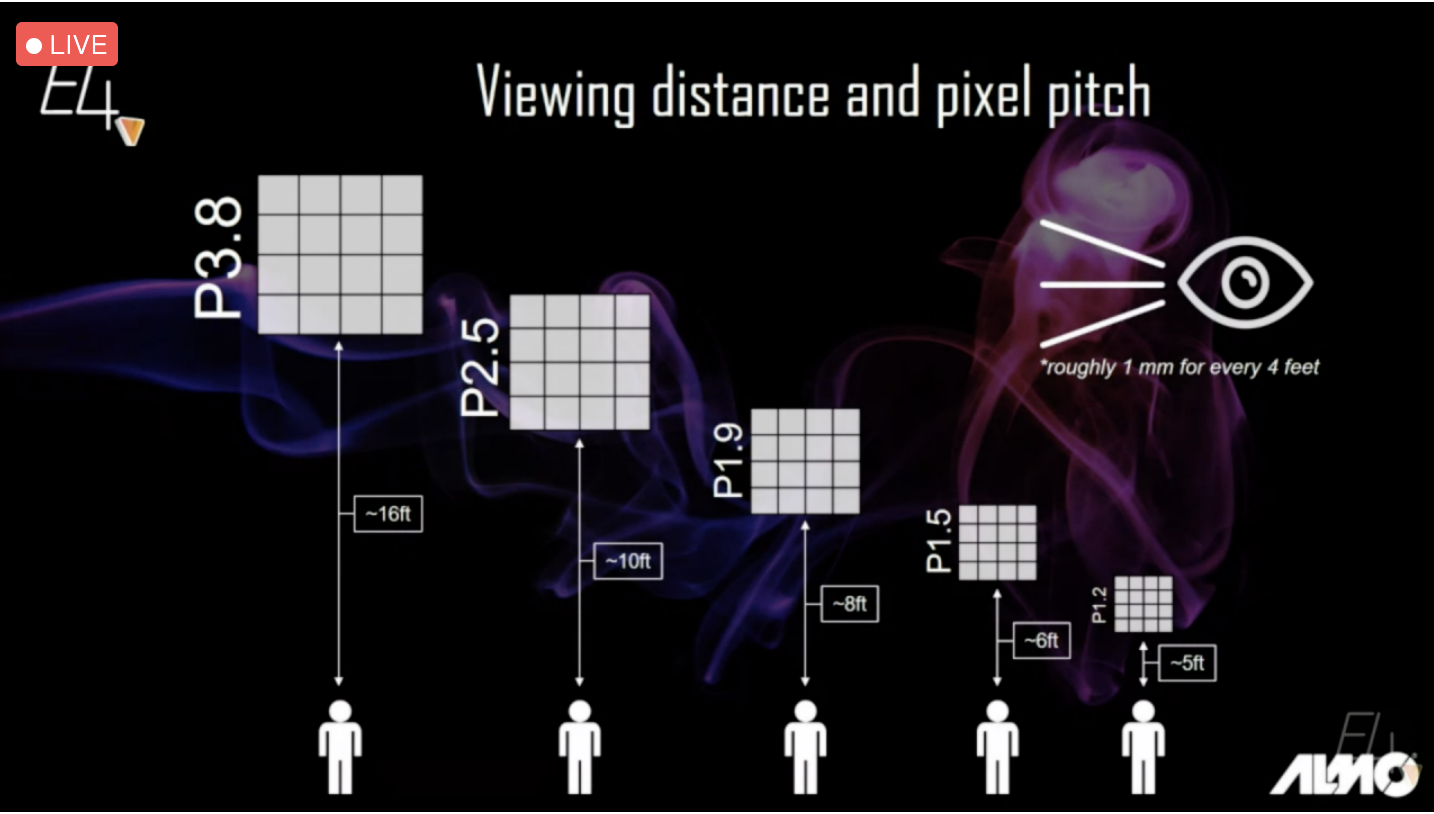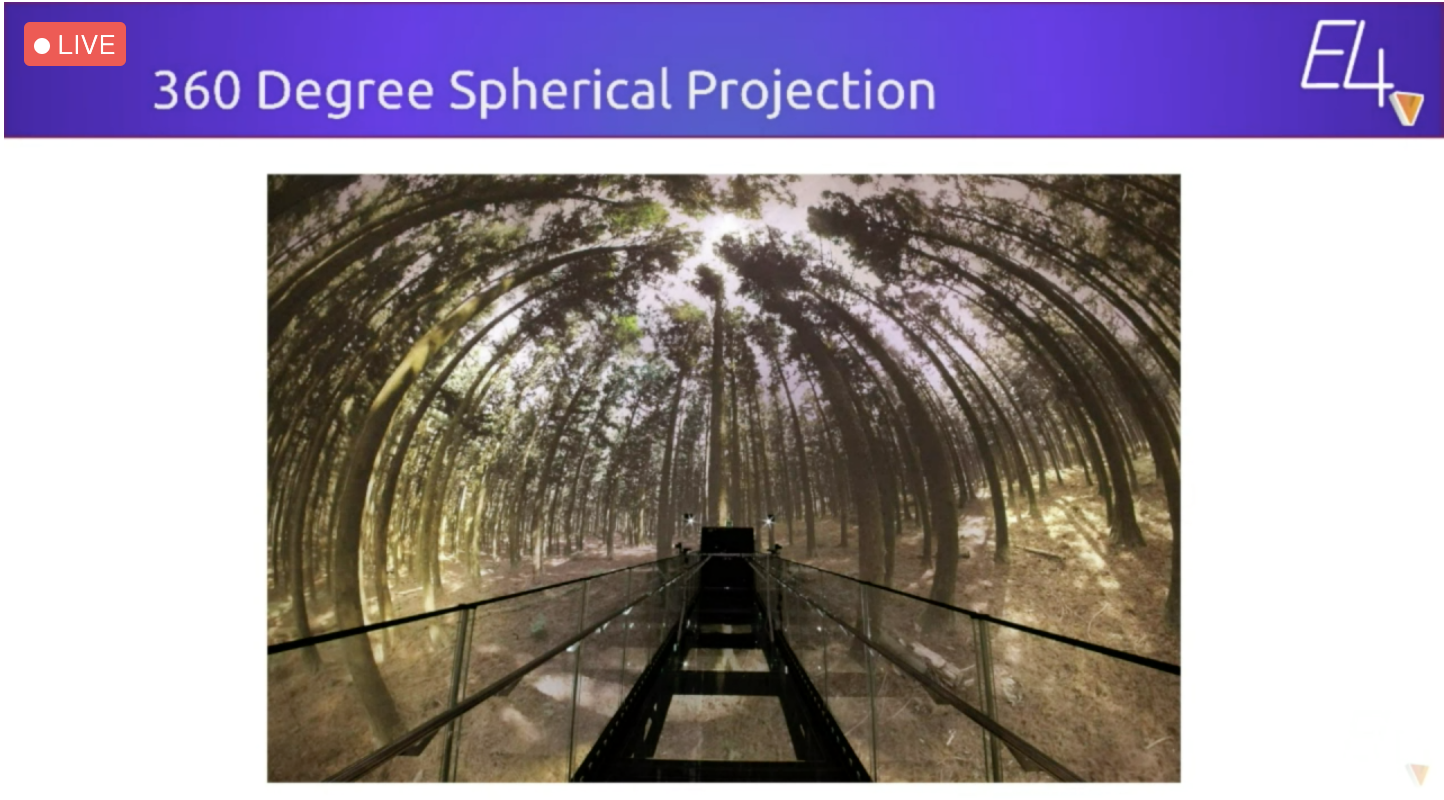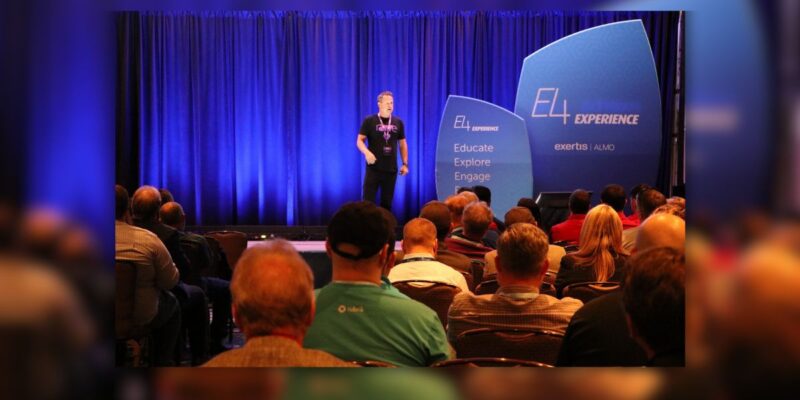I Attended Almo’s E4v — Here’s What I Learned

As with many events in the world right now, Almo Professional A/V canceled its E4 Experience(s) that was supposed to happen this spring. Instead, the distributor held an totally online version — calling it the E4 Evolution or E4v. I wrote a sneak preview about it a couple of weeks ago. But in case you missed that, here is the gist.
E4v began on May 18 and took place over three days. Each day had the same or similar content, but it was geared toward a different region of the U.S. May 18 was West Coast, May 21 was the Central U.S. and May 22 was East Coast.
There were four pretty diverse (CTS-certified) topics: UCC, projection, dvLED and esports. Each one was split into a webinar-style session and allowed industry experts to connect with the audience on that level.
Here’s what I learned.
UCC is ch-ch-ch-ch-changing.
This portion was delivered by the man/myth/legend Gary Kayye. It’s no secret that the UCC market is poppin’ right now. So that set the scene for Gary’s first education session of the day: The New Normal Will Provide AV With an Explosive UCC Growth Opportunity: Will You Be Ready?
I’ll just leave this GK quote here:
“Zoom is the Kleenex of videoconferencing, which is crazy because 10 years ago it didn’t exist.”
So, we know Zoom is obviously doing well. But what are the other steps to cashing in on this growth opportunity? Is it just being in the right place at the right time? Or paying attention to what works and what doesn’t in terms of this new normal? (Gary, if you’re reading this, please don’t fire me for using that term.)

Follow-up question: What is the new normal? Who is going back to the office, and who is going to keep working from home? According to Gary, it’s still going to be a mix, 9.7 out of 10 meetings right now are virtual — so we will see that number change some. Offices will open back up, but don’t expect for all your meetings to be in-person anymore!
Also — bring-your-own-meeting systems, it’s your time to shine! The problem with room-based systems is that there is usually one computer in the room that everyone has to interact with to start a meeting. Hell, even pre-COVID-19, RBMs only accounted for 40% of the market. So, don’t be surprised if that number continues to sink a little bit. But it also might shrink a little bit.
Yes, I did say shrink. According to GK, you will not only continue to see huddle rooms built for four people. But with social distancing standards that might not totally go away, you’ll start to see huddle rooms made for two people!
OK, so now you have all this great information. But what do you do with it? According to Gary, start looking at what the market needs and provide for it.
These are some of the things that matter:
- There will be a movement in making static monitors interactive.
- Headsets are having a moment, and they will continue to do so (GK recommends for utmost quality going the gaming headset route).
- Focus on the purpose of the room before filling it with audio equipment.
- Archival of meetings — with more people recognizing the value of UCC, more people will be searching for opportunities to store meetings and access them at any time!
Making specifications for a dvLED display is hard!
This section is for all you folks out there who have been wondering, “how can I design an LED display?” Spoiler alert: It’s a ton of math! Almo Pro A/V dvLED expert Adam Coleman hosted a session all about walking viewers through that process. Here are a few things you need to know:
- dvLED is one of the hottest displays on the market right now. But they’re modular — meaning integrators have to spec the displays themselves. And that’s hard!
- It’s important to choose the right product! There are two main categories for dvLED: fixed installation and rental/staging.
- IP ratings matter: If the display is outdoors, it has to be IP65 — but inside IP40 is fine. (This also applies to brightness. Outdoor displays have to be 5000+ nits, whereas inside can be ~400 nits.)
- There is no gold standard for pixel pitch and relative viewing distance for dvLED.
But there are still plenty of things left to figure out. These are how you calculate some of the specs:
- There are two primary methods to calculate array size: Aspect ratio or physical space. (Adam gave examples on how to calculate this.)
- In choosing the correct controller: Keep in mind what content is coming in. Will there be more than one source? Is the display large enough to require multiple controllers?
- On data runs/pathways: Displays are typically wired via video signal cable. The controller then connects with Ethernet cables to the display. (Adam gave examples for how to calculate this too.)
- What can the controller support? How can we run our power? Determine the pixel matrix and use that to determine the max panels/port.
- You can calculate power runs by calculating the panel consumption in w/m2, factoring in operating voltage and accessing the panel quantity based on amp ratings.


Safe to say, there is a lot that goes into specifying this type of display — and if you’re an integrator, you need to make sure you’re doing it right.
What’s the future of projection?
A beginning question: Are projectors old technology, or are they timeless? That seems to be something we are all pondering. According to Jonathan Brawn (principal at Brawn Consulting), we shouldn’t push projection out just yet.
“I want to give you a new perspective on the unique capabilities of projectors. They are much more powerful than many of us initially think,” Jonathan said.
First, he says to establish the starting parameters of a system before understanding the benefits of projectors:
- Objective/purpose of the system
- Environment/orientation/size/shape of the room
- Ambient light conditions
- Audience size and position
- Content type, quality needed
- TCO of the system
Also — note the unique benefits of projection that you may not have thought of:
- Seamless images
- Variable sizing and aspect ratios
- Edge blending
- Image mapping — and its artistic impact
- Cost per square foot
- TCO with solid-state illumination
- Size and portability matter, kids. Projection can be taken from room to room. Also, it can make a big difference in a space (even if it’s just a short-throw projector.)
Notice above where I wrote about “seamless images.” There’s a reason for that! According to Jonathan, seams are super distracting to viewers. Plus, projection images can be made precisely smaller or larger to fit an application. This is a big reason: Projection allows people to think outside the box of a standard aspect ratio.
Oh, and here’s a snippet about edge blending: It’s a technique used to combine several projected images into one. Multiple projectors can be stacked to make this happen!
Finally, Jonathan talked a little bit about projection mapping.
“This creates something that is arguably magical.”
Plus, since it’s about impact — chances are your audience will be engaged.
Also — you can think outside the box: Hello, 360-degree spherical projection!

His final thoughts answered the “why projection” question. He said if you’re listening to your end user’s needs, their application will likely lead you to the best display approach. No display fits all!
Esports is having a moment.
That’s no secret, and it definitely has been something on our lips at rAVe a lot the past year. The definition has obviously changed since it first came out — now there’s esports AND egaming? What will those pesky kids think of next? (Don’t worry — the two are in the process of merging, so don’t worry about it too much.) But first of all — check out this article if you’re not familiar with esports because Gary Kayye gives you all the basics. In this next webinar, he chose to continue the theme and give you a little more information on the wide world of esports.
According to GK, the growth of esports is so dynamic that it will rival the likes of the NFL by the end of the decade.
OK, so, you’re caught up now. Here are the facts.
- Esports was worth $1.4 billion BEFORE COVID-19 happened.
- There are 335 million players and viewers across the globe.
- The egaming (referring to the games themselves, whether or not you play them competitively) market is worth $93 billion.
But how does this work? There are four parts, and each reacts differently with AV companies — there are four feeds for AV people to worry about:
- Gamers — headsets on, strategizing. These are exactly the people you think they are.
- Live spectators — people sitting in an audience! These are the people actively watching a very complicated AV setup. (Complete with displays, projectors, LCD screens, you name it!)
- Observers — These are like the coach or referee. They are seeing the game from any angle they want or what the game would allow. It’s like a drone following the player around.
- Streaming audience — These are the people watching via livestream. Twitch, YouTube, these are all part of this feed.
How does this AV work? The feeds are pulled from HDMI/SDI and shot into a matrix, out a production switcher and then viewed by the audience. Gary said, in the future, there are big brands that have AV-over-IP switchers. And esports will utilize this.
The top six esports games:
- League of Legends
- Call of Duty
- Valorant
- CS:GO
- Overwatch
- Fortnite
There are exciting programs around the world for esports teams:
- The University of Southern California has the number one game design program in the U.S.
- UC Irvine is the top university in the country for esports.
- These teams end up making a lot of money, and colleges often don’t have to fund these teams themselves.
If you want to get into this market and aren’t in it yet, here are the three venue types:
- Classrooms/lecture halls
- Student union meeting spaces
- Arenas
Things you can provide these spaces:
- LED walls and ribbons — SDI, HDMI and AV-over-IP.
- LCD panels — HDMI and AV-over-IP
- Projectors — SDI, HDMI and AV-over-IP
- Production broadcast cameras
- Handheld/wireless broadcast cameras
- POV cameras
It’s also becoming more diverse by the day — it’s an emerging market just like all other AV markets were once. But understanding what you can offer this market is essential if you want to be part of it!
Conclusion
Can my brain even begin to hold all the information given to me at E4v? I hope so. Please hold while I try to find out.
Overall I think everyone would say this event was a success — and even though we couldn’t all be together for Almo E4, they still put on a really cool experience for all you #AVtweeps.
Plus — there are scheduled E4 events for the fall! Get more info about how to attend here.





